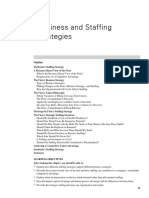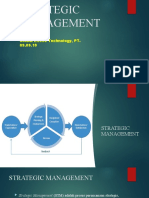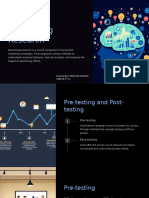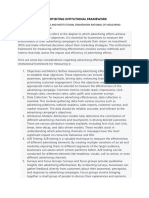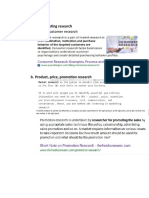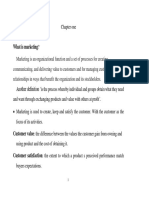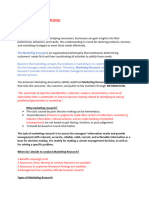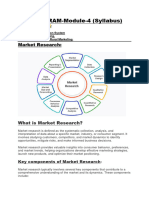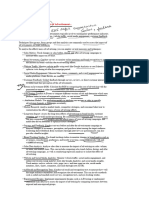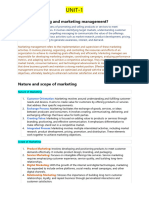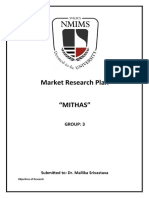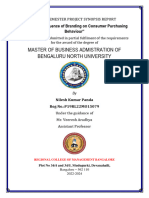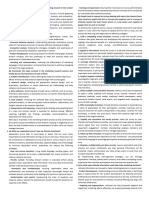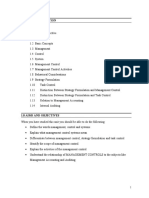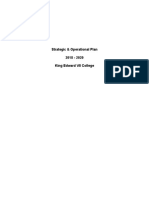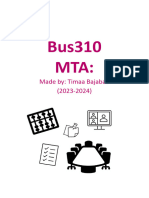0 ratings0% found this document useful (0 votes)
12 viewsApplication of Marketing Research
Application of Marketing Research
Uploaded by
hvijay885Copyright:
© All Rights Reserved
Available Formats
Download as PPTX, PDF, TXT or read online from Scribd
Application of Marketing Research
Application of Marketing Research
Uploaded by
hvijay8850 ratings0% found this document useful (0 votes)
12 views11 pagesOriginal Title
Application of Marketing Research[1][1]
Copyright
© © All Rights Reserved
Available Formats
PPTX, PDF, TXT or read online from Scribd
Share this document
Did you find this document useful?
Is this content inappropriate?
Copyright:
© All Rights Reserved
Available Formats
Download as PPTX, PDF, TXT or read online from Scribd
Download as pptx, pdf, or txt
0 ratings0% found this document useful (0 votes)
12 views11 pagesApplication of Marketing Research
Application of Marketing Research
Uploaded by
hvijay885Copyright:
© All Rights Reserved
Available Formats
Download as PPTX, PDF, TXT or read online from Scribd
Download as pptx, pdf, or txt
You are on page 1of 11
Presentation On
Application of Marketing Research
SUBMITED To: Mba Program Presented By:
Dr. monika dubey Rajasthan Technical Univercity Rishabh Soni
Kota
Application of Marketing
Research
Marketing research is a crucial business function
that provides valuable insights to guide strategic
decision-making. It encompasses a wide range of
applications, from understanding customer
attitudes and preferences to measuring brand
equity and evaluating advertising effectiveness.
Measurement Process of
Customer Attitude and
Techniques
• Surveys and questionnaires are commonly used
to assess customer attitudes, preferences, and
perceptions.
• Techniques like semantic differential scales, Likert
scales, and projective techniques help capture
nuanced customer feedback.
• Observational research, focus groups, and in-
depth interviews provide deeper insights into the
emotional and psychological drivers of customer
attitudes.
Customer Satisfaction Research Methods
• Surveys and questionnaires: Measure customer satisfaction through
quantitative data collection, including rating scales and open-ended feedback.
• Focus groups: Gather in-depth qualitative insights by facilitating interactive
discussions with a sample of customers.
• Customer interviews: Conduct one-on-one interviews to deeply understand
individual customer experiences and pain points.
Process of Measuring Customer
Satisfaction
Identify Key Drivers 1
Determine the most
important factors that
influence customer
satisfaction, such as product 2 Collect Feedback
quality, service, and value. Gather customer feedback
through surveys, interviews,
and other research methods
to understand their
Analyze and Interpret 3 experiences and
perceptions.
Carefully analyze the
collected data to identify
patterns, trends, and areas
for improvement in the
customer experience.
Brand Equity Research
Brand equity is a crucial measure of a company's
market position and consumer perceptions.
Conducting in-depth brand equity research
provides valuable insights into brand awareness,
brand loyalty, and the overall strength of a brand in
the marketplace.
Techniques of Brand Equity Research
1. Customer Surveys: Assess consumer awareness, perception, and loyalty towards
the brand through comprehensive surveys.
2. Focus Groups: Conduct in-depth discussions with target customers to uncover
emotional connections and brand associations.
3. Brand Audits: Analyze the brand's market positioning, competitive landscape, and
alignment with the company's strategic objectives.
4. Brand Tracking Studies: Monitor the brand's performance over time, including
changes in awareness, preference, and market share.
5. Conjoint Analysis: Evaluate the relative importance of different brand attributes and
features in driving consumer purchase decisions.
Advertising Research: Scope
and Importance
Advertising research plays a crucial role in understanding the effectiveness
and impact of marketing communications. It provides insights into audience
preferences, message resonance, and campaign performance to optimize
advertising strategies.
Methods of Advertising Research
1. Pre-Testing: Evaluating ad concepts and messages before launch to gauge
consumer response and optimize effectiveness.
2. Concurrent Testing: Monitoring ad performance during the campaign to make
real-time adjustments and improve delivery.
3. Post-Testing: Analyzing the overall impact of the advertising campaign after
completion to measure brand lift, recall, and conversion.
4. Focus Groups: Conducting in-depth discussions with target consumers to gather
qualitative insights on ad creative and messaging.
5. Online Surveys: Collecting quantitative data from a wider audience to assess
metrics like awareness, likeability, and purchase intent.
Copy Testing: Pre-testing, Concurrent Testing, and
Post-testing
Advertising research involves three key stages of copy testing to ensure
the effectiveness of ad campaigns: pre-testing, concurrent testing, and
post-testing. Pre-testing evaluates ad concepts and messages before
launch to optimize their impact. Concurrent testing monitors
performance during the campaign, enabling real-time adjustments.
Post-testing analyzes the overall impact after the campaign's
completion to measure brand lift, recall, and conversion.
Ethics in Marketing Research
Informed Consent Participant Privacy
Ensure participants fully Protect the confidentiality and
understand the research purpose anonymity of research participants
and provide explicit consent before to maintain trust and integrity.
engaging.
Objectivity and Accuracy Responsible Data Usage
Report research findings Collect, store, and use participant
objectively, without bias or data ethically, adhering to data
misrepresentation to maintain privacy regulations.
credibility.
You might also like
- It Security Goverance Organizational Structure TemplateDocument8 pagesIt Security Goverance Organizational Structure TemplateHarish Naidu100% (1)
- Jean M. Phillips, Stan M. Gully - Strategic Staffing-Pearson (2014) - 43-69Document27 pagesJean M. Phillips, Stan M. Gully - Strategic Staffing-Pearson (2014) - 43-69belinda.rahmadaraNo ratings yet
- International Management Managing Across Borders and Cultures Text and Cases 9th Edition Deresky Solutions Manual DownloadDocument26 pagesInternational Management Managing Across Borders and Cultures Text and Cases 9th Edition Deresky Solutions Manual DownloadByron Lindquist100% (28)
- Cipm FSG 2-2016 Final PDFDocument14 pagesCipm FSG 2-2016 Final PDFTeoNo ratings yet
- Strategic-Management TrainingDocument34 pagesStrategic-Management TrainingHisar SimanjuntakNo ratings yet
- Essay Plan - Do Political Connections Constitute A Competitive Advantage'Document9 pagesEssay Plan - Do Political Connections Constitute A Competitive Advantage'esthernkwNo ratings yet
- Design To ValueDocument27 pagesDesign To ValueWilliam100% (1)
- Chapter 7 of TU BBA 8th Semester Marketing ResearchDocument33 pagesChapter 7 of TU BBA 8th Semester Marketing ResearchGaurab PaudelNo ratings yet
- LO2. Assessing The Reasons For Existing Levels of Consumer InterestDocument6 pagesLO2. Assessing The Reasons For Existing Levels of Consumer Interestabebemekasha00No ratings yet
- Project Report.Document56 pagesProject Report.Siyaspu Yoosaf100% (1)
- Introduction To Advertising ResearchDocument13 pagesIntroduction To Advertising ResearchRushabh SakpalNo ratings yet
- Advertising & Marketing Research: - by Moneeba IftikharDocument24 pagesAdvertising & Marketing Research: - by Moneeba IftikharMass Comm AssignmentsNo ratings yet
- Advertising and Marketing ResearchDocument24 pagesAdvertising and Marketing ResearchRuhi LalNo ratings yet
- Unit 3 Brand Equity.Document25 pagesUnit 3 Brand Equity.Sankalp JainNo ratings yet
- SIMR - PratulyaDocument11 pagesSIMR - Pratulyasajidshah.ubsNo ratings yet
- Product ManagementDocument12 pagesProduct Managementtanvijain0404No ratings yet
- Advertisiting Intitutional FrameworkDocument14 pagesAdvertisiting Intitutional FrameworkProfessorNo ratings yet
- Consumer Behaviour: By-Amit GawaliDocument19 pagesConsumer Behaviour: By-Amit GawaliAmit GavaliNo ratings yet
- Client Research and CompetitionsDocument15 pagesClient Research and CompetitionsTony WariboNo ratings yet
- Departmental Exam ReviewerDocument23 pagesDepartmental Exam ReviewerJenny faith raceNo ratings yet
- Unit 9 - Marketing CommunicationDocument19 pagesUnit 9 - Marketing CommunicationSajjan ThapaNo ratings yet
- IMC Chapter 15Document21 pagesIMC Chapter 15S.m. ProteekNo ratings yet
- Marketing Research CH 1Document16 pagesMarketing Research CH 1Dalia ElarabyNo ratings yet
- Marketing Research Exam NotesDocument64 pagesMarketing Research Exam NotesFarida ElMoralyNo ratings yet
- Defining MR ProblemsDocument22 pagesDefining MR ProblemsÂjày HáñdèNo ratings yet
- Relationship Marketing in Retailing & International RetailingDocument72 pagesRelationship Marketing in Retailing & International Retailingkiran 17mba11No ratings yet
- Developing A Brand Equity Measurement and Management SystemDocument38 pagesDeveloping A Brand Equity Measurement and Management SystemMadeleine M. AlyahNo ratings yet
- Program: MBA, Trimester 3, First Year Subject Code-305 MM: Customer Oriented Marketing of Services Unit No. 3Document23 pagesProgram: MBA, Trimester 3, First Year Subject Code-305 MM: Customer Oriented Marketing of Services Unit No. 3pavan kalyanNo ratings yet
- Module 3Document80 pagesModule 3GEORGENo ratings yet
- A Project Report 3Document35 pagesA Project Report 3adibosss135No ratings yet
- CB NewDocument15 pagesCB NewabumehebulNo ratings yet
- Research Design 11Document15 pagesResearch Design 11KaranNo ratings yet
- Mani IntroductionDocument8 pagesMani Introductiongopivijaykumar66No ratings yet
- Edited Market Research and ApplicationDocument17 pagesEdited Market Research and ApplicationkinjangmeritbihNo ratings yet
- Marketing Research NotesDocument15 pagesMarketing Research NotesAntony MwangiNo ratings yet
- UNIT IV Customer Competition Business modelDocument20 pagesUNIT IV Customer Competition Business modeldevan rajaNo ratings yet
- Unit 5 MC&A - DR Sanjay ManochaDocument42 pagesUnit 5 MC&A - DR Sanjay ManochaSurbhi MahendruNo ratings yet
- IED RAM Module 4Document17 pagesIED RAM Module 4Jagyandutta NaikNo ratings yet
- ChatgptDocument22 pagesChatgptsubham not a nameNo ratings yet
- Unit 10 Measuring Effectiveness of AdvertisementDocument3 pagesUnit 10 Measuring Effectiveness of Advertisementaditi shrivastavaNo ratings yet
- ASP-week 1-Session 3-Notes On Advtg ResearchDocument4 pagesASP-week 1-Session 3-Notes On Advtg ResearchrahulNo ratings yet
- An Analytical Study of Customer Perception and BrandDocument22 pagesAn Analytical Study of Customer Perception and Brandshivanshugla12No ratings yet
- Q 1Document3 pagesQ 1INDIA TECHNo ratings yet
- Services Marketing Unit IiiDocument21 pagesServices Marketing Unit Iiivikramadk1404No ratings yet
- Marketing PrelimDocument32 pagesMarketing PrelimPrincess Jurei EsguerraNo ratings yet
- Chapter 1Document23 pagesChapter 1dharshnipriya447No ratings yet
- Unit 3Document63 pagesUnit 3Mulenga NkoleNo ratings yet
- Marketing Management AllDocument45 pagesMarketing Management Allkomall.menaria99No ratings yet
- Unit 2 Types of Marketing Research ???? CXFVDocument35 pagesUnit 2 Types of Marketing Research ???? CXFVKrish JaiswalNo ratings yet
- Q.1 What's The Nature, Scope and Features of Marketing Research? Ans. The Role of Marketing Research in Strategic Planning and Decision Making OurDocument18 pagesQ.1 What's The Nature, Scope and Features of Marketing Research? Ans. The Role of Marketing Research in Strategic Planning and Decision Making OurKuldeep SinghNo ratings yet
- Brand Positioning Mini ProjectDocument58 pagesBrand Positioning Mini Projectmohangoel99100% (7)
- Module 1 in Marketing ResearchDocument5 pagesModule 1 in Marketing ResearchSai LacabaNo ratings yet
- CB ObjectivesDocument7 pagesCB Objectivesgkj999No ratings yet
- Chapter9 10Document29 pagesChapter9 10ARNAV MEHTANo ratings yet
- LO1. Confirming Product or Service MarketDocument6 pagesLO1. Confirming Product or Service Marketabebemekasha00No ratings yet
- Implantation of Global Brand Equity Measurement SystemDocument29 pagesImplantation of Global Brand Equity Measurement SystemRaj Kishore GoswamiNo ratings yet
- Chapter 2.2 Consumer ResearchDocument7 pagesChapter 2.2 Consumer Researchydshivani07No ratings yet
- Analysis of Customer FeedbackDocument58 pagesAnalysis of Customer Feedbackbabajan_4100% (1)
- Group 3Document4 pagesGroup 3Ishan MaheshwariNo ratings yet
- MBA 3rd SEMESTER PROJECT SYNOPSIS REPORTDocument7 pagesMBA 3rd SEMESTER PROJECT SYNOPSIS REPORTsardarkoushik13No ratings yet
- MR-skiptaDocument11 pagesMR-skiptagamaton21No ratings yet
- MKT Final - Short-Answer QuestionsDocument7 pagesMKT Final - Short-Answer QuestionsKim Ngân VũNo ratings yet
- PDF PRINCIPLE-OF-MARKETING-WEEK-7-8Document15 pagesPDF PRINCIPLE-OF-MARKETING-WEEK-7-8Angelito AdoptanteNo ratings yet
- MM Unit 1Document13 pagesMM Unit 1Vanshika YadavNo ratings yet
- Brand Research & Analysis: Understand Its Importance & ApplicationFrom EverandBrand Research & Analysis: Understand Its Importance & ApplicationNo ratings yet
- Customer Analysis & Insight: An Introductory Guide To Understanding Your AudienceFrom EverandCustomer Analysis & Insight: An Introductory Guide To Understanding Your AudienceNo ratings yet
- Marketing Mastery: Strategies for Building and Sustaining a Strong Customer BaseFrom EverandMarketing Mastery: Strategies for Building and Sustaining a Strong Customer BaseNo ratings yet
- How Can Hannah Attract More Customers To Her New ShopDocument2 pagesHow Can Hannah Attract More Customers To Her New ShopTiffany BurnsNo ratings yet
- 1405 UF1 (Part 4 As Presented)Document67 pages1405 UF1 (Part 4 As Presented)Chi CụpNo ratings yet
- 1 - Risk Wind EnergyDocument11 pages1 - Risk Wind EnergyBellaNo ratings yet
- Knowledge Management BrochureDocument4 pagesKnowledge Management BrochureKuldeep KumarNo ratings yet
- Pepsi - Value Chain, Strategic Planning, Decision PlanningDocument11 pagesPepsi - Value Chain, Strategic Planning, Decision PlanningSwagat LenkaNo ratings yet
- Mcs NotesDocument196 pagesMcs NotesYonasNo ratings yet
- Oracle Quoting Implementation GuideDocument230 pagesOracle Quoting Implementation GuideMourad100% (1)
- Strategic and Operational PlanDocument12 pagesStrategic and Operational PlanKira- SamaNo ratings yet
- Marketing Mix in The Development of Marketing StrategyDocument15 pagesMarketing Mix in The Development of Marketing StrategyGladys GaleraNo ratings yet
- Executive Summary: Public Sector Banks - Includes Reserve Bank of India, 20 Public Sector Banks, State Bank ofDocument11 pagesExecutive Summary: Public Sector Banks - Includes Reserve Bank of India, 20 Public Sector Banks, State Bank ofaviNo ratings yet
- Daftar Buku Health - Hospital IM-SDocument42 pagesDaftar Buku Health - Hospital IM-SHarvey PepoNo ratings yet
- Business Planning and Strategy Activity No. 1Document18 pagesBusiness Planning and Strategy Activity No. 1Gennelyn Grace PenaredondoNo ratings yet
- Supply Chain AnalyticsDocument94 pagesSupply Chain AnalyticsMartín Sánchez González100% (1)
- MCR2E Chapter 1 SlidesDocument14 pagesMCR2E Chapter 1 SlidesRowan RodriguesNo ratings yet
- Mb0046 Unit 15-SlmDocument28 pagesMb0046 Unit 15-SlmDeepak Daya MattaNo ratings yet
- Lean Project Definition WorksheetDocument5 pagesLean Project Definition WorksheetDũng Tây NinhNo ratings yet
- Chapter 10 Organizational Structure and Design True/False QuestionsDocument23 pagesChapter 10 Organizational Structure and Design True/False QuestionsRazan AbuayyashNo ratings yet
- Bus310 MTADocument24 pagesBus310 MTAsaadalhezzaniNo ratings yet
- American Marketing Association Is Collaborating With JSTOR To Digitize, Preserve and Extend Access To Journal of International MarketingDocument29 pagesAmerican Marketing Association Is Collaborating With JSTOR To Digitize, Preserve and Extend Access To Journal of International MarketingMultazamMansyurAdduryNo ratings yet
- Management Information SystemDocument21 pagesManagement Information SystemTari0% (1)
- Strategic MGMT ch03Document24 pagesStrategic MGMT ch03farazalam08100% (7)
- Segmentation Is at The Heart of Marketing Strategy'Document3 pagesSegmentation Is at The Heart of Marketing Strategy'Shalini RastogiNo ratings yet

